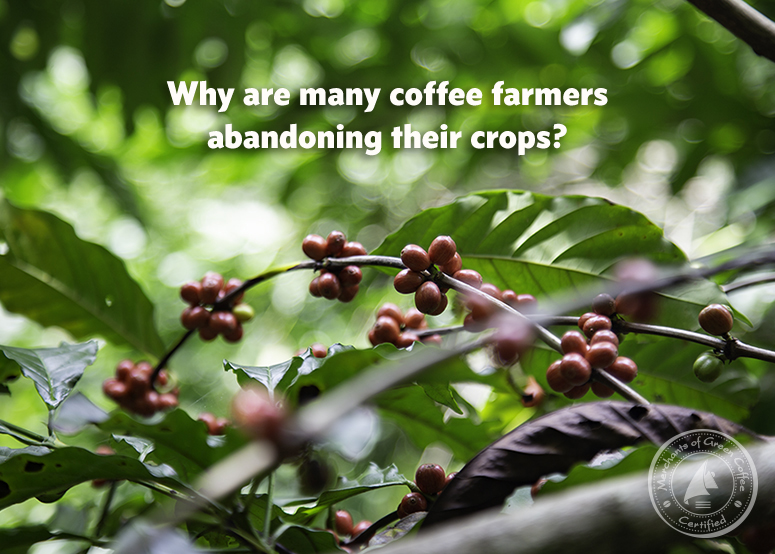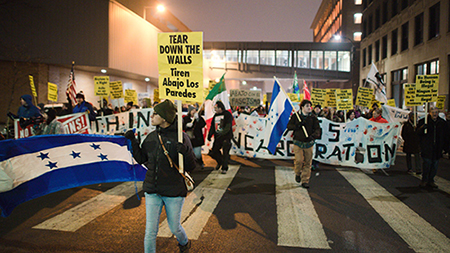
Note: We’re publishing this guest post because we appreciate when any journalist presents a good understanding of the picture. Merchants of Green Coffee is not affiliated with the Immigration Advice Service organization.
Coffee Disparity is Real
Despite being a highly addictive substance and one of the world’s most popular drinks (with approximately 2 billion cups being consumed every day), a significant portion of the people who farm and produce coffee live in poverty. A clear example of how the value of labor is not reflective of how much labor is required to produce something can be seen in the case of coffee growers.
Approximately 25 million small-scale farmers produce 80% of the world’s coffee within 60 tropical countries, and yet they have very little power in terms of the global coffee market. A further 125 million people are dependent on the coffee plant for their livelihoods. Despite being a major contributor to the economies of developing countries, the market is extremely unstable and is dependent on climate conditions, crop conditions, and the availability of labor.
As well as this, the coffee plant grows best at high altitudes, with rainfall and temperatures being significant influences on the strength of a yield. The mountainous areas where coffee is grown can require farmers to live in inhospitable areas to farm their crops, which can take up to six years from initial seedling planting to harvesting.
The disjointedness between the luxurious Western artisanal coffee scene and the poverty that many of these farmers and their families live in is eye-opening. A fifth-generation coffee producer, Cindy Dubon, was kind enough to share her story of living in the Yoro region of Honduras and her family’s work in growing coffee. While she has developed a relatively successful business, there is no denying that for many in her situation, it is a harsh existence. But why is this the case?
Reasons for Market Instability
One of the most overlooked reasons for inequality in the global supply chain is not a lack of willingness on the consumer’s part to pay more. In fact, research has shown that consumers are happy to pay up to 22% more for a fairly traded cup of coffee.
One of the main drivers of unstable coffee prices is that of the global commodities market. Many people are surprised to learn that in fact, the price they pay for a coffee is dictated by this largely invisible trading market (the Intercontinental Exchange which is based in New York). It’s a complex system, but to put it simply, the global price of coffee is referred to as the C price, and this is not only impacted by supply and demand for coffee worldwide, but also on the predicted future price of coffee-based financial derivatives.
In 2019, Arabica beans traded at 86 cents per pound, representing a 14-year low for prices. According to analyses, coffee prices have fallen to less than a third of their level in 1960, despite being one of the world’s largest export commodities, and the seventh-largest agricultural export. As well as this, between 1970 and 2000, coffee was the world’s second most valuable commodity exported by developing countries.
So why is it the case that many coffee producers are paid between $1-$3 per day?
The reality is that for farmers who invest in technology to run their farms, as well as grow and harvest their crops, they often see very little return on their investments. The fluctuation of the C price means that some years they may make a small profit, while others, they will actually go into debt if the price paid for the produce is less than the cost of production. As well as this, the C price is in US dollars, which is of course subject to fluctuating currency exchange rates.
Even for coffee farmers who don’t directly export their coffee beans, and instead sell them locally, their buyers still work within the same system which is dependent on the C price and the US dollar exchange rate.
There is also the matter of local costs for farm machinery and other production costs. This means that if a country’s currency is set at a lower price, the costs of importing goods to work the farm will be more expensive and will make it even more difficult for the farmer to achieve profitability.
Many farmers have had no other choice but to abandon their farms and their land in search of alternative employment.
Rising Income Inequality
James Wolfensohn, then President of the World Bank, noted in 2003, “The reduction of coffee prices and also other commodities… is undermining the economic sustainability of countries and millions of families in Latin America, Africa and Asia.” Unfortunately, the situation has not improved since 2003.
Even before the shocking effects of the coronavirus pandemic were felt around the world in 2020, the World Social Report highlighted the problem of growing wealth inequality, despite previous years of progress.
The report shows clearly that while overall inequality is declining, there is a greater distancing in the gap between the highest and lowest incomes. In fact, this gap has more than doubled since 1990. Since the pandemic, this level has increased. One report from the charity Oxfam estimated that more than half a billion people are likely to be plunged into poverty by 2030 – which likely would not be the case if the pandemic had not happened.
The UN Secretary General, Antonio Guterres, stated succinctly that “COVID-19 has been likened to an x-ray, revealing fractures in the fragile skeleton of the societies we have built…While we are all floating on the same sea, it’s clear that some are in super yachts, while others are clinging to the drifting debris”
Climate Change
It is not just the behemoths of rising income inequality, a capricious market, or the lack of available workers to work on the crops: there is also the urgent matter of climate change.
The rapid changes that are occurring as a result of increasing global temperatures have meant that coffee crops are in real danger. A Fairtrade report has estimated that at the current rate of global warming, approximately 50% of the land area used for growing coffee will not be suitable by 2050 due to increasing temperatures.

It is disheartening to consider that while coffee farmers place themselves on the front line to work the land in harsh conditions and attempt to build a profitable business, this is still a goal that is out of the reach for many producers. It is unacceptable that they should have to accept so much risk, at the mercy of a market that cares little about how the ‘commodity’ is produced. For agricultural workers who have not contributed to our current climate crisis, they are disproportionately dealing with its effects, including issues like crop blight, floods, drought and an increasingly unstable climate.
It is unsurprising then, that so many people should be leaving their coffee farms en masse. Many of these migrants are attempting to enter the United States in the hopes of finding work and providing for their families.
Understanding the Reasons for Migration to the US
When people in the United States think about the people who make that dangerous journey to cross the border, they may have an inaccurate perception of what that person is leaving behind, and why. For coffee producers like Cindy Dubon, they and their family work extremely hard, waking at 3.30am to work their farm, with limited food for their daily nutrition, and housing that is not always fully sheltered from the elements.
It is estimated that at least 5.5 million smallholder coffee farmers are struggling to survive below the international poverty line of $3.20 per day, with other data showing that one third of farmers earn less than $100 per year from the coffee production process. For many families, it is difficult for children to attend schools, meaning that they have fewer chances to improve their life outcomes. One person (Jorge Reyes, from Honduras) who attempted to migrate to the US, openly stated, “If we are going to die anyway, we might as well die trying to get to the United States.”
Decades of political instability and internal violence has fueled this crisis for countries like Honduras and Guatemala. The United States is not guilt-free in this, having been an instigator of crisis for many years and having contributed to the poor economic situation today.
Unsurprising then, that people who are finding themselves unable to survive on their lands due to global markets (much of which is determined in the US) and climate change (a lot of which has been caused by the US), should make the decision to migrate there in the hopes of a better life.
We are all aware of the so-called ‘caravans’ of migrants moving from Central America to the US border. Based on the worsening situation for coffee farmers, things are unlikely to improve any time soon. In fact, it has been predicted that up to 1.5 million people will arrive at the border after migrating from Central America or Mexico by 2050.
The route to US citizenship is one that is fraught with difficulties. In 2019, almost 850,000 people were granted US citizenship. In the month of February 2021 alone, there was just under 97,000 apprehensions at the US border, with 46% of these people coming from El Salvador, Guatemala and Honduras.
Working Towards Equity in the Coffee Supply Chain
Clearly, this ongoing humanitarian crisis can no longer be tolerated, and we cannot pretend that it does not exist. So, what can the average coffee consumer in the US do to ensure that they are not contributing to this situation?
It’s important to point out, that despite the bleak situation, there are many stories of coffee farmers and coffee companies working in partnership to pay fair prices.
At Merchants of Green Coffee, for example, there are a number of systems in place to ensure sustainability and fairness throughout all aspects of the supply chain. These include solar-powered coffee processing, restorative farming, and programs to support female-led coffee farming.
To build a fairer and more equitable world, it’s vital that we as consumers interrogate our coffee habits and not simply ignore the uncomfortable truth about where our morning cup is coming from, and who has had to suffer in order to supply it.
Aileen Bowe is a writer and correspondent for the Immigration Advice Service, an organization of immigration solicitors that provides legal aid to forcibly displaced persons.
